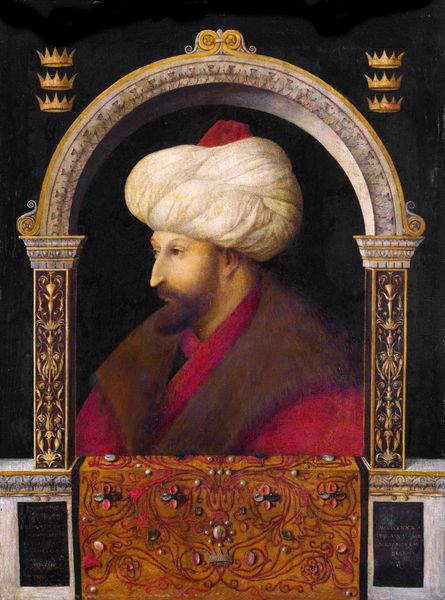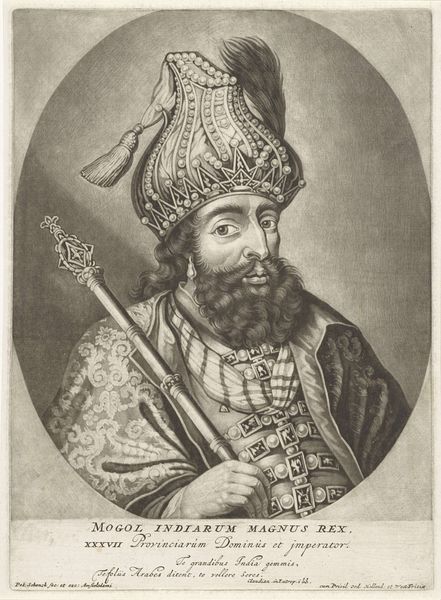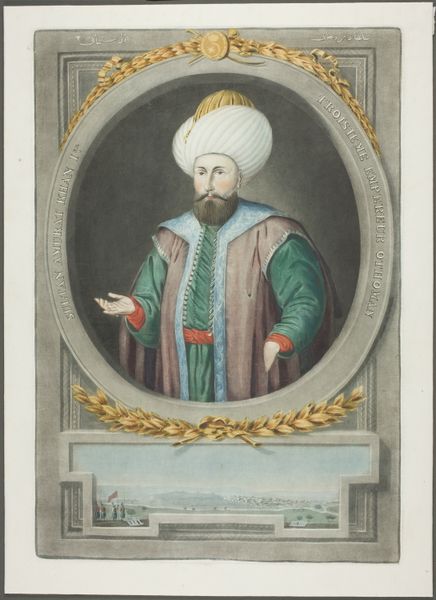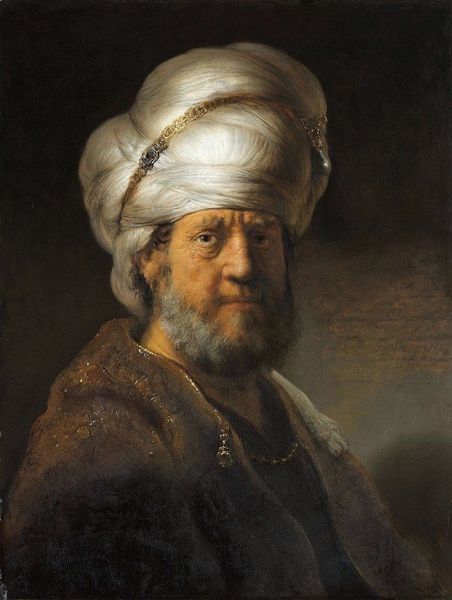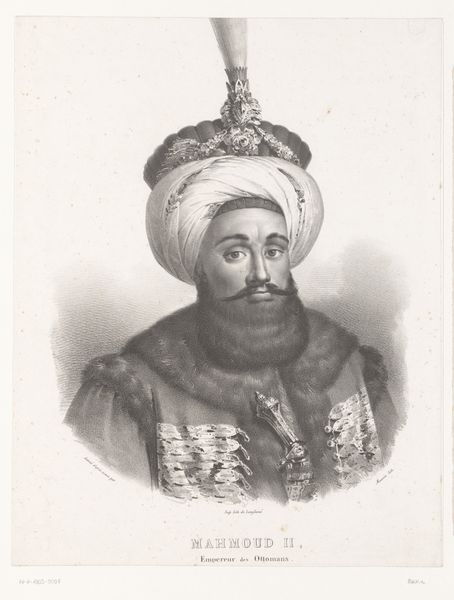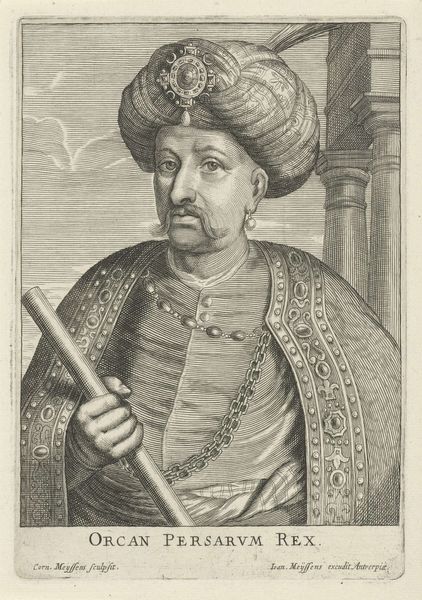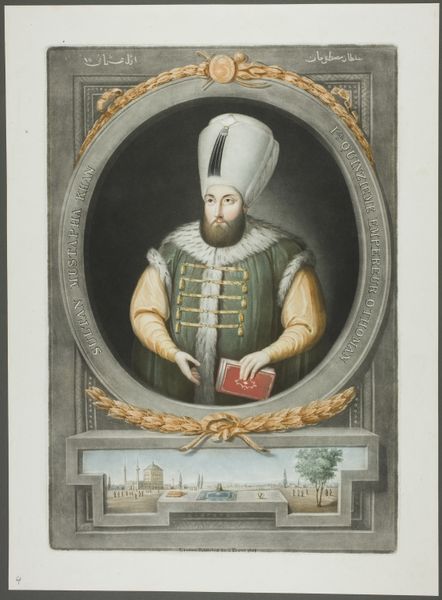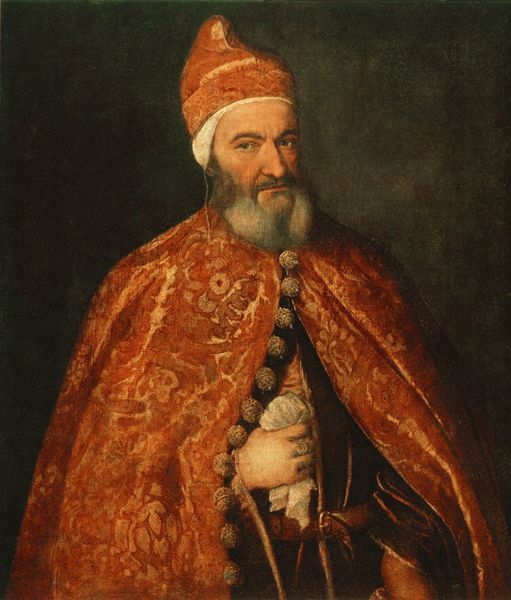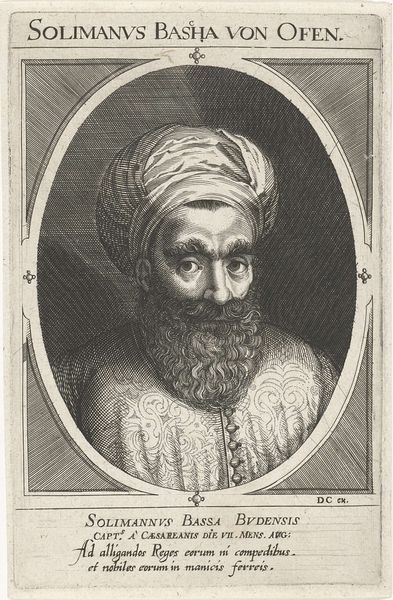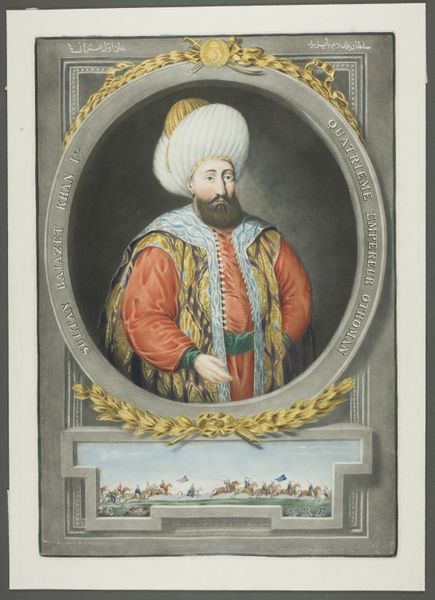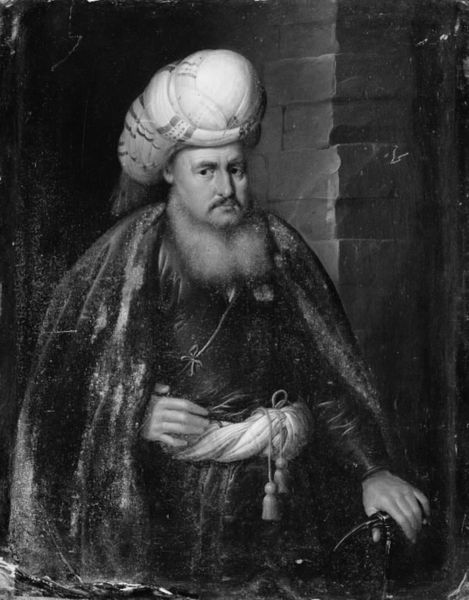
oil-paint
#
portrait
#
oil-paint
#
oil painting
#
italian-renaissance
Copyright: Public domain
Curator: Here we have a portrait, executed in oil paint. It is known as "Portrait of Mehmed II", ascribed to Paolo Veronese and made during the Italian Renaissance. Editor: Immediately, I’m struck by the weight of the image. The solemn expression and the heavy, ornate turban give a real sense of authority, but there’s a fragility there, too, wouldn't you say? Curator: Indeed. The portrait is composed using a profile view, directing our attention to the meticulous detail within the ornamentation and physiognomy, guiding our perception of status through material representation. Notice how the composition uses visual weight on the top and bottom edges with darkness in the center of the painting. Editor: And Mehmed II! His gaze directs us into an intricate visual field where East and West were intensely co-mingling. His towering turban, bejeweled with glittering ornaments, stands for power and the sacred authority he would have inherited, an ancient tradition extending through Ottoman history. It connects him to an expansive history, almost rendering his mortality silent, his body but a fleeting instance. Curator: Precisely! Observe the tension created by juxtaposing texture, where the smooth areas contrast starkly with rougher applications in others - Veronese employed color as a tool of emphasis. He draws attention towards elements symbolizing stature and nobility within Ottoman social structure through the handling of paint application. Editor: Symbols of both temporal and spiritual rule abound! Portraits weren't just about representation. They encoded an entire language for reading identity, heritage and dynastic aspirations. Every pearl and jewel tells its own intricate tale about Mehmed’s perception of himself. Curator: What lingers with me, perhaps due to the handling of textures and contrasting light, is how a two-dimensional oil-based object is here translated, giving what could be cold flat presentation almost tangible substance. Editor: Ultimately, it speaks to art’s enduring capacity, doesn’t it? We delve deeper not just into the sitter’s world but ourselves.
Comments
No comments
Be the first to comment and join the conversation on the ultimate creative platform.
